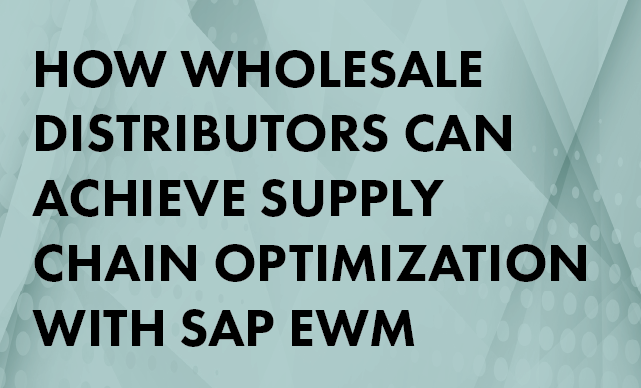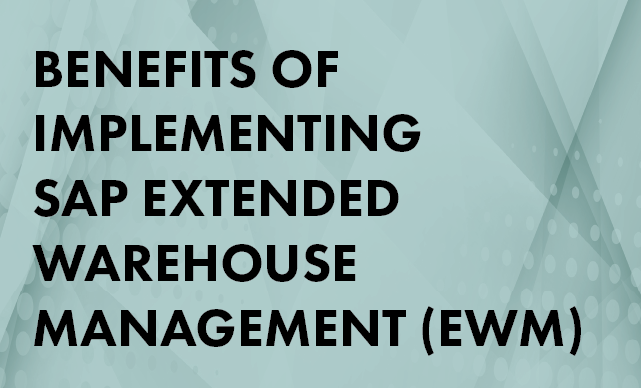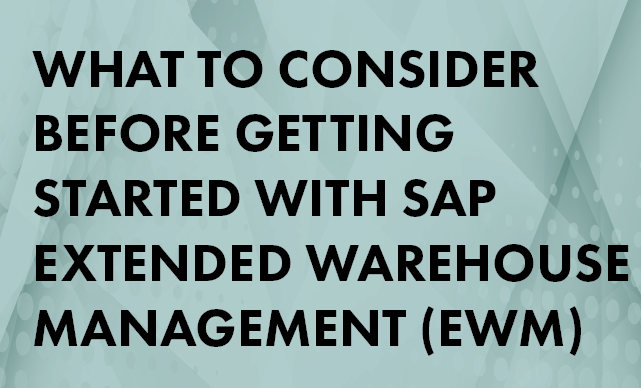Effective Warehouse Management with Reveal
Meet the Authors
Key Takeaways
In today's dynamic environment, it is essential for organizations to keep track of material movement, optimize warehouse space utilization, and refine picking and storing processes.
In a time where customers expect rapid delivery, disruptions can hinder achieving world-class Available to Promise (ATP) service levels. By partnering with Reveal, organizations can improve internal processes and utilize SAP smartly to achieve sustainable value.
Reveal's oVo® methodology enables organizations to unlock this potential by educating on system capabilities, optimizing master data, using the Warehouse Monitor for exception management, automating processes, and establishing KPIs for warehouse performance enhancement.
In today’s dynamic environment, it is essential for organizations to keep track of material movement, optimize warehouse space utilization, and refine picking and storing processes. SAP Warehouse Management (WM) and SAP Extended Warehouse Management (EWM), the advanced warehouse management solution in S/4HANA, enable organizations to adeptly adjust to changing demand requirements, enhance supply chain flexibility, maintain real-time inventory visibility, and fulfill customer commitments.
Effective Warehouse Management not only allows for accurate labor planning in relation to volume, automation and control of material movements, reliable inventory accuracy, but it is for proactive measures to mitigate potential supply chain disruptions. SAP provides ready-to-use tools that require no customization to reap these benefits.
The foundation of effective warehouse management lies in optimized rules (master data) that govern bin capacities, storage units, picking and storing strategies, FIFO/LIFO rules, shelf life, and more. When these rules are combined with a warehouse team that trusts the data and manages by exception, materials are efficiently processed through receiving, storing, picking, and staging to optimally meet demand. Both SAP WM and EWM offer significant opportunities to automate and streamline processes, adapt to fluctuating demand, and, in optimal conditions, achieve a competitive edge with comprehensive visibility.
Explore related questions
However, challenges in warehouse management often include manual processes that bypass system recommendations, material misplacement, and physical space constraints not reflected in the system. These issues can lead to frustrated employees, inefficient operations, inventory discrepancies, lost customers, and excessive inventory levels. These inefficiencies usually stem from misaligned rules (master data settings), a lack of system understanding, and non-compliance with business processes, resulting in higher operating costs, reduced profit margins, and unmet service levels.
In a time where customers expect rapid delivery, disruptions can hinder achieving world-class Available to Promise (ATP) service levels. By partnering with Reveal, organizations can improve internal processes and utilize SAP smartly to achieve sustainable value. Reveal enables organizations to achieve this by encouraging a shift from transactional focus to being information-users who manage processes and apply knowledge, improvements in agility, service, cost, and inventory performance are realized.
To ensure a successful EWM implementation, organizations can consider these key strategies:
Early Preparation: Begin the housekeeping process immediately to reap long-term benefits. Thoroughly invest in this phase and consider external expertise if needed.
Understand the Transition from WM to EWM: Grasp the essential features transitioning from Warehouse Management (WM) to EWM, focusing on storage types, sections, bin types, and bins.
Acclimate to New Terminologies and Functionalities: Adapt to new concepts and functionalities introduced during the transition, such as FIORI, EWM analytics, warehouse monitor, and shipping cockpit. Familiarize with EWM-specific terminologies for common activities.
Choose the Right EWM Version: Select the version of EWM that aligns with your business needs, be it Stockroom Management, EWM Basic, or EWM Advanced. Different facilities might benefit from different versions; balance the complexity against business needs.
Decide on Deployment Strategy (Embedded vs. Decentralized EWM): Understand the nuances of embedded and decentralized EWM. Factor in the total cost of ownership in your decision. While the basic embedded EWM is included in the S4/HANA license, the decentralized option might offer greater efficiency, automation, redundancy, and agility, possibly compensating for the higher upfront costs.
By concentrating on these strategic areas, businesses can effectively handle the complexities of EWM implementation, maximizing its potential for improved warehouse management.






